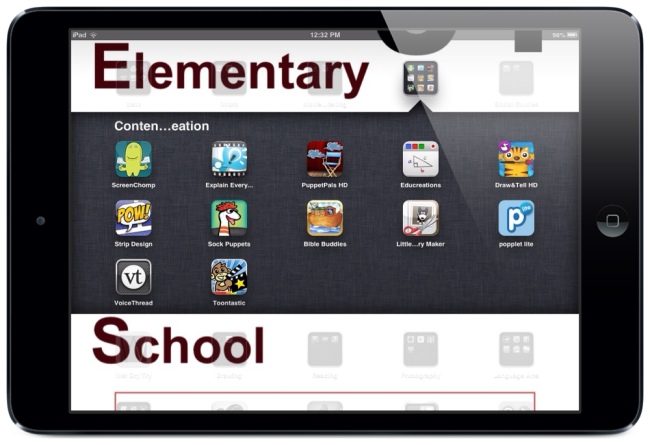Over the past year, there has been a noticeable shift in how iPads are being used in education and beyond. What was once primarily a device for consumption—checking email, browsing the web, reading, or playing games—is increasingly being recognized as a powerful content-creation tool. Students, teachers, and professionals alike are now leveraging iPads to produce high-quality work: videos, interactive presentations, digital posters, podcasts, and even collaborative projects that were once confined to laptops or desktop computers.

However, the perception that tablets are less capable than traditional computers still lingers outside the education sphere. I was recently reminded of this when I ran into an old friend who had purchased the latest BlackBerry Z10. When I asked how it compared to his iPhone, he said that while he owned both an iPhone and an iPad, he only did his “real work” on the BlackBerry.
This highlights a common mindset, tablets are still viewed by some as primarily leisure or supplementary devices. But in classrooms, workshops, and creative studios, this perception is rapidly changing. The question is: will this stigma persist another year from now, or will more people recognize the iPad’s full potential for creation?
At our school, we are actively exploring and promoting the iPad as a content-creation device. For example, our class set of iPads has a dedicated folder labeled “Content-Creation Apps.” During a recent staff workshop, teachers spent time experimenting with these apps and discovering their capabilities. In just ten minutes, small groups of educators were able to create short example projects—everything from simple digital posters to short presentation videos.
Afterwards, each group shared their experiences and discussed how the apps could be integrated into lessons across various subjects. This hands-on experimentation allows teachers to see not only what the apps can do, but also how students might use them to enhance their learning.
Our broader goal as iPad educators is to move away from relying solely on content-specific apps—such as preloaded math or language apps—and to develop proficiency in creation-focused tools. By mastering these apps, teachers can design more engaging, dynamic, and interactive lessons.
More importantly, students can be empowered to express their learning creatively, whether that’s producing a short film, designing an infographic, or creating a multimedia presentation that demonstrates their understanding. This approach not only encourages deeper learning but also prepares students for a world where digital literacy and creativity are essential skills.
Some examples of creation apps that have proven particularly effective include Explain Everything, which allows students to create interactive whiteboard-style presentations; iMovie, for video projects; Book Creator, for creating digital books; and Keynote, for polished presentation slides.
These tools, combined with cloud-based solutions like Dropbox or Google Drive, enable students to collaborate, share, and submit work seamlessly, without being tied to a traditional computer lab.
As educators, we must also remember that introducing students to these tools early helps them build a lifelong skillset. When students can use tablets to create, they not only learn the content more effectively but also develop communication, problem-solving, and digital storytelling skills that will serve them beyond the classroom.
Have you experimented with content-creation apps in your classroom? Are there particular tools or strategies that have transformed how your students engage with lessons? Share your thoughts and suggestions in the comments—we’d love to hear your ideas, discover new apps, and continue this collaborative discussion about maximizing the potential of iPads for teaching and learning.